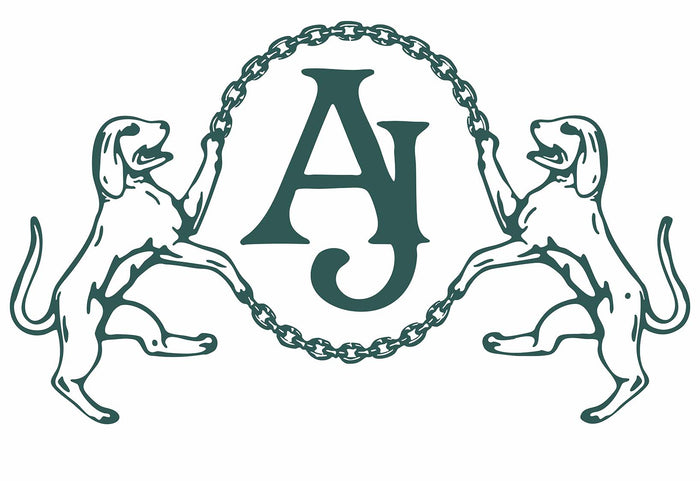
Victorian wedding gift jewellery functioned as far more than mere presents; these pieces served as social currency, political statements, and tangible manifestations of relationships within the complex hierarchy of Victorian society. From Queen Victoria's carefully chosen train-bearers' brooches to elaborate family gifts recorded in minute detail in royal journals, wedding jewellery gifts created lasting bonds between giver and recipient whilst establishing social precedents that filtered throughout the Empire.
The Protocol of Royal Wedding Gifts
The exchange of jewellery at royal weddings followed strict protocols that reflected and reinforced social hierarchies. Queen Victoria's meticulous recording of gifts reveals a system where every present carried meaning beyond its material value.
The Significance of Documentation
Victoria's journal entries enumerate gifts "with care and in detail," revealing their emotional significance. From her cousin George Cambridge, she received "a brooch in the shape of a lily-of-the-valley," whilst Lady Sarah and Lady Clementina Villiers gave her "some flowers as a comb and a brooch." These presents, though simple, "meant a great deal to her," demonstrating how sentimental value superseded monetary worth in Victorian gift-giving.
The Royal Archives preserve detailed lists of gifts, including donor, description, occasion, and often the recipient's response. These records reveal patterns: lilies-of-the-valley for purity, hearts for affection, Scottish stones for Highland connections, and photographs for modern sentiment. Each category carried specific meanings understood by contemporary society.
Train-Bearers' Brooches: Tokens of Royal Favour
Following Queen Victoria's wedding ceremony, she presented her train-bearers with commemorative brooches in dark blue velvet cases, establishing a tradition that would continue throughout her reign. These pieces, preserved at Woburn Abbey, Hatfield House, and other aristocratic seats, represent the material culture of royal favour.
Design and Symbolism
Each train-bearer's brooch, whilst part of a coordinated set, showed subtle variations reflecting the recipient's relationship to the crown. The descendants of Lady Elizabeth Sackville West, who married the 9th Earl De La Warr, preserve examples showing how these pieces incorporated personal elements alongside royal symbols. The brooches typically featured the royal cypher, wedding date, and often orange blossom motifs, creating a visual link to the ceremony.
Social Capital and Display
Train-bearers' brooches functioned as social capital, worn at court presentations and state occasions as proof of intimate royal connection. Their display signalled participation in historic events, elevating the wearer's social status. Contemporary portraits often show recipients wearing these brooches, ensuring their royal associations were permanently recorded.
Birthday and Christmas Tables: Annual Gift Traditions
Victoria and Albert observed the German custom of decorated Christmas trees and birthday tables, creating elaborate displays where jewellery gifts featured prominently. James Roberts's 1856 watercolour "The Queen's Birthday Table at Osborne" provides visual evidence of these presentations.
The Birthday Gift System

From 1848, the Queen's birthday was celebrated at Osborne, with tables arranged displaying gifts from family members. Kathryn Jones's compilation of Albert's gifts for the 2010 exhibition catalogue reveals jewels on nearly every table. The holly brooch set with two stag's teeth and tied with a Royal Stuart tartan ribbon, souvenir of Balmoral, exemplifies the personal nature of these exchanges.
Birthday gifts followed seasonal patterns: Scottish pieces after autumn visits to Balmoral, maritime themes following yacht cruises, and Continental styles after European travels. This chronological progression created a jewelled diary of the royal year, with each piece commemorating specific experiences.
Christmas Innovations
Christmas 1845 saw Prince Albert present Victoria with orange blossom earrings and a second brooch for her parure, demonstrating how gift-giving occasions allowed for gradual accumulation of matching suites. This practice of building parures through successive gifts became standard among Victorian families, allowing expensive sets to be assembled over time.
Wedding Gifts as Political Instruments
Royal wedding gifts served diplomatic functions, strengthening alliances and acknowledging relationships between nations. The jewellery exchanged at Princess Victoria's 1858 marriage to Prince Frederick of Prussia exemplified this political dimension.
International Exchange
Foreign royalty sending wedding gifts carefully calibrated their presents to reflect political relationships. Elaborate gifts suggested desire for closer ties, whilst modest presents maintained diplomatic courtesy without implying deeper commitment. The public display and documentation of these gifts in newspapers and illustrated journals broadcast political messages to international audiences.
Colonial Contributions
Wedding gifts from colonial territories often incorporated local materials – Australian opals, Indian diamonds, Canadian gold – creating jewelled maps of Empire. These pieces simultaneously demonstrated colonial loyalty and showcased imperial resources, functioning as propaganda for British global dominance.
Family Heirlooms and Generational Gifts
Victorian wedding gift traditions emphasised continuity through generations, with heirloom pieces carrying family history forward.
Transformation and Adaptation
Older pieces were frequently reset for wedding gifts, updating their style whilst preserving their emotional significance. A Georgian brooch might be converted to a Victorian pendant, or loose stones from an unfashionable parure reset in contemporary mountings. These transformations balanced respect for the past with present fashion, creating pieces that were simultaneously ancient and modern.
Maternal Gifts
The Duchess of Kent's gifts to Victoria reveal maternal traditions in wedding jewellery. The prayer book clasps combining wit (clasped hands as a 'clasp') with sentiment, given on Victoria's wedding day, established precedents for mother-to-daughter wedding gifts. These pieces often incorporated birth stones, hair, or miniatures, creating biographical jewellery that documented family relationships.
Commemorative Pieces for Wedding Participants
Beyond train-bearers, numerous wedding participants received commemorative jewellery, creating hierarchies of gifts that reflected social standing.
Household Staff Gifts
Even household staff received commemorative pieces, though of modest value compared to aristocratic gifts. These might include silver pins with royal cyphers, small brooches with wedding dates, or lockets containing wedding favour ribbons. Such pieces, treasured by recipients and often passed down through generations, demonstrate how royal weddings created lasting connections across social classes.
The Democratisation of Commemorative Jewellery
Commercial jewellers quickly capitalised on royal wedding gift traditions, producing affordable versions of royal designs. Birmingham workshops created stamped brass versions of train-bearers' brooches, whilst provincial jewellers offered "wedding favour brooches in the royal style." This commercialisation spread royal gift-giving customs throughout society, establishing traditions that persist in modern wedding favours.
The Evolution of Gift Traditions Through Victoria's Reign
Wedding gift traditions evolved significantly during Victoria's long reign, reflecting changing technologies, tastes, and social structures.
Photographic Innovations
By 1858, photographic jewellery appeared among wedding gifts. Victoria received "a very small photograph of the Princess Royal in her marriage dress, set in gold with a black velvet band," representing the integration of new technology into traditional gift-giving. These pieces combined modernity with sentiment, creating contemporary relics that documented specific moments.
Post-Albert

With Prince Albert's death in December 1861, the character of jewel gifts changed dramatically. Daughters were furnished with trousseaux incorporating memorial elements, whilst granddaughters received memorial pendants featuring their unknown grandfather. Wedding gifts began incorporating mourning elements – black enamel, jet, hair – creating hybrid pieces that celebrated new unions whilst acknowledging loss.
International Influence and Cultural Exchange
Victorian wedding gift traditions influenced international customs, spreading British practices globally whilst absorbing foreign influences.
Continental Variations
Queen Louise's November 1839 gift to Victoria introduced Continental styles to British royal jewellery. The "féronières" received by the Princess, later passing as necklaces according to Crown Jeweller's ledgers, demonstrate how foreign gifts introduced new forms to British jewellery vocabulary.
American Interpretations
American high society eagerly adopted British royal wedding gift customs, with New York and Boston families commissioning copies of royal pieces from Tiffany & Co. and other prestigious firms. These American interpretations often exceeded their British models in elaborateness, reflecting New World wealth and confidence.
Documentation and Preservation
The meticulous documentation of Victorian wedding gifts provides invaluable historical evidence about social relationships, economic values, and cultural meanings.
Archival Evidence
Royal Archives, private family papers, and jewellers' ledgers preserve detailed records of wedding gifts. These documents reveal not just what was given but why: celebrating alliances, acknowledging service, expressing affection, or fulfilling obligations. Cross-referencing multiple sources often reveals hidden meanings in seemingly straightforward gifts.
Museum Collections
Major museum collections preserve Victorian wedding gift jewellery, providing material evidence of gift-giving customs. The Victoria and Albert Museum, British Museum, and Royal Collection maintain significant holdings, whilst private collections at historic houses offer intimate glimpses into family traditions.
Legacy and Contemporary Practice
Victorian wedding gift jewellery traditions established precedents that continue to influence modern practice. The expectation of commemorative gifts for wedding participants, the accumulation of jewellery sets through successive occasions, and the documentation of gifts in wedding albums all derive from Victorian customs.
Modern royal weddings maintain many Victorian traditions: attendants receive commemorative gifts, family heirlooms are worn and gifted, and official gifts are publicly displayed and documented. These continuities demonstrate the enduring power of Victorian precedents in shaping how we understand and practice wedding gift-giving.
The Victorian transformation of wedding gifts from simple exchanges to complex social rituals created lasting traditions that transcend their original context. Through their careful cultivation of gift-giving customs, Victoria and Albert established practices that made jewellery central to wedding celebrations, creating tangible bonds between participants that endured long after the ceremony ended. These traditions remind us that wedding jewellery serves not merely as decoration but as material culture that documents relationships, preserves memories, and creates lasting connections between past, present, and future.

